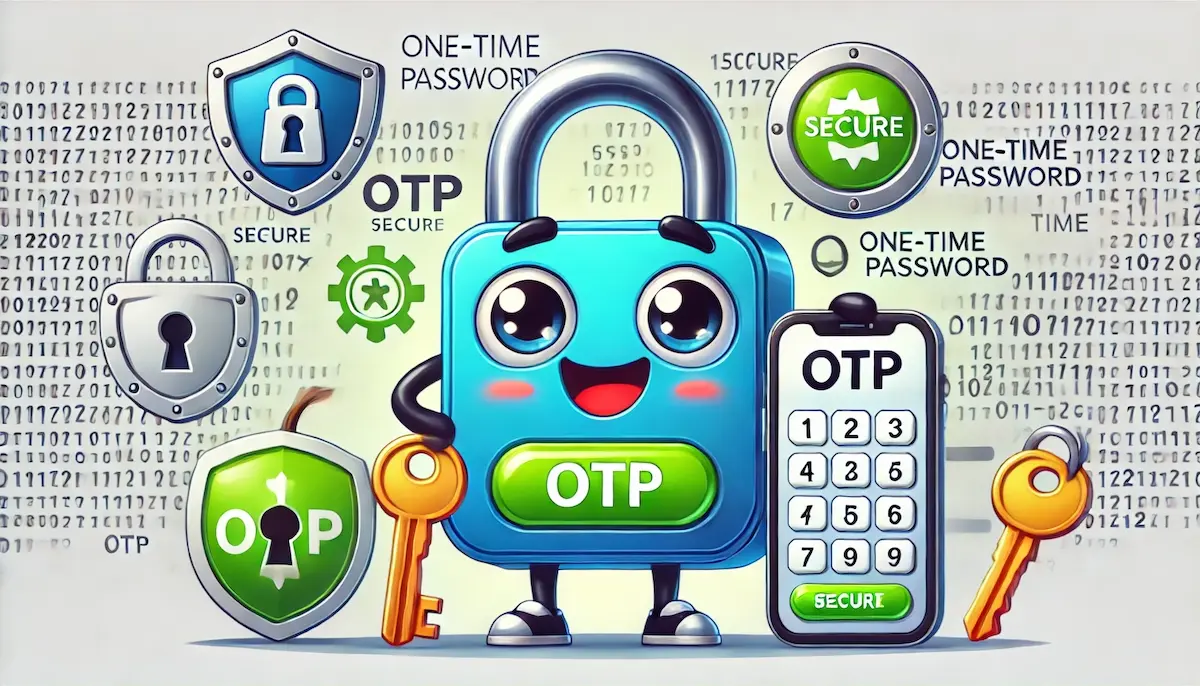A One-Time Password (OTP) is a security mechanism used to authenticate users and verify transactions by generating a unique, temporary password that can only be used once. OTPs enhance security by mitigating risks associated with static passwords, such as phishing, replay attacks, and password theft.
How OTP Works
Generation
OTPs are generated using algorithms that produce a unique code for each authentication attempt. These algorithms ensure that the generated password is unpredictable and different each time. Common methods for generating OTPs include:
- Time-Based One-Time Password (TOTP): OTPs are generated based on the current time. An example is Google Authenticator, which generates a new code every 30 seconds.
- HMAC-Based One-Time Password (HOTP): OTPs are generated based on a counter value that increments with each new password. An example is the use of HOTP in hardware tokens.
Delivery
OTPs can be delivered to users through various channels, including:
- SMS: A code is sent to the user’s registered mobile number.
- Email: A code is sent to the user’s registered email address.
- Authenticator Apps: Apps like Google Authenticator or Authy generate OTPs on the user’s device.
- Hardware Tokens: Physical devices generate and display OTPs.
Verification
When a user enters the OTP, the system verifies it by checking if it matches the generated password for that specific time or counter value. If the OTP is valid, the user is authenticated, and access is granted.
Applications of OTP
Multi-Factor Authentication (MFA)
OTPs are commonly used as part of multi-factor authentication (MFA) systems, which require users to provide multiple forms of verification. For example, a user might need to enter a static password and an OTP to access their account, enhancing security.
Transaction Verification
OTPs are used to verify financial transactions, such as online banking transfers or e-commerce purchases. This ensures that the person initiating the transaction is the legitimate account holder, reducing the risk of fraud.
Password Recovery
OTPs can be used in password recovery processes. When a user requests to reset their password, an OTP is sent to their registered contact method to verify their identity before allowing the password change.
Secure Access
Organizations use OTPs to secure access to sensitive systems and data. Employees may be required to enter an OTP in addition to their regular credentials to access company resources remotely.
Benefits of OTP
Enhanced Security
OTPs provide an additional layer of security, making it more difficult for attackers to gain unauthorized access. Even if an attacker obtains a user’s static password, they cannot log in without the OTP.
Reduced Risk of Phishing and Replay Attacks
Since OTPs are only valid for a short period or a single use, they reduce the risk of phishing attacks and replay attacks. Even if an OTP is intercepted, it cannot be reused.
Convenience and Ease of Use
OTPs are relatively easy for users to understand and use. They can be delivered through various convenient methods, such as SMS or email, ensuring accessibility for a wide range of users.
Flexibility
OTPs can be integrated into various systems and applications, providing flexible security solutions for different use cases, from online banking to accessing corporate networks.
Challenges of OTP
Delivery Delays
There can be delays in delivering OTPs via SMS or email, especially in areas with poor network coverage or during high traffic periods. Such delays can frustrate users and hinder access.
Dependency on External Devices
Using OTPs often requires access to external devices, such as mobile phones or hardware tokens. If a user loses their device or it becomes inaccessible, they may be unable to receive the OTP.
Potential for Interception
Although OTPs enhance security, they can still be intercepted if not properly protected. For instance, SMS OTPs can be vulnerable to SIM swapping attacks.
Usability Concerns
Frequent requests for OTPs can inconvenience users, leading to potential dissatisfaction. Balancing security and user convenience is crucial for effective implementation.
The Future of OTP
The future of OTPs involves advancements in technology to address current challenges and enhance security further. Key trends include:
- Biometric Integration: Combining OTPs with biometric authentication methods, such as fingerprint or facial recognition, to provide even stronger security.
- Encrypted Delivery: Improving the security of OTP delivery channels through encryption and secure transmission methods.
- Adaptive Authentication: Using machine learning and AI to create adaptive authentication systems that consider user behavior and context to determine when an OTP is needed.
Blockfine thanks you for reading and hopes you found this article helpful.
